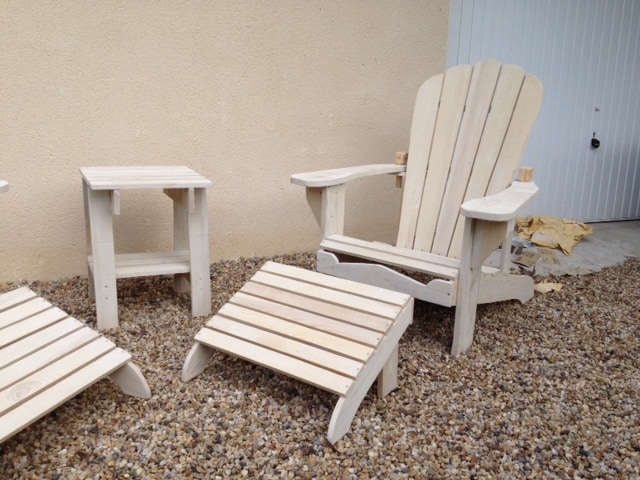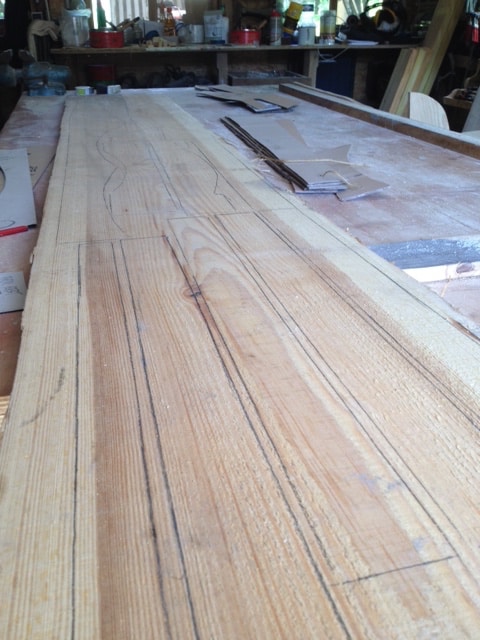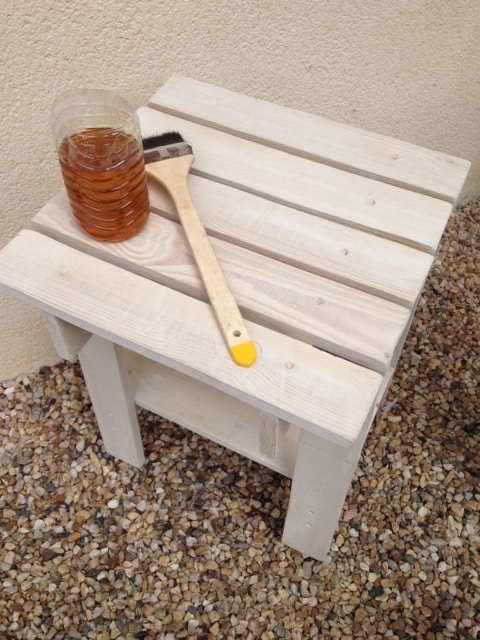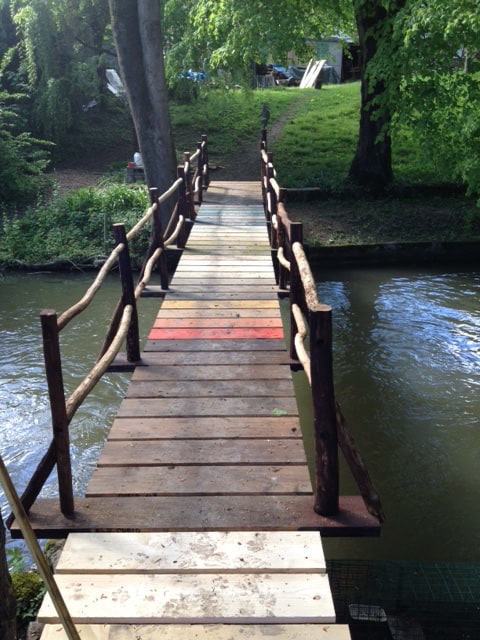I received an email from one of my blog readers last month, who lives in France. I love getting feedback from readers and learning how they use different paints and techniques. We can all learn something new from somebody! Meet John Tandburg, who loves to paint and create his own masterpieces. Here’s how he built and painted these lovely Adirondack chairs in Miss Mustard Seed’s Milk Paint in colour, Grain Sack. Thanks for sharing, John.
John’s story …
I am Norwegian, born and raised in Oslo. I started working in France in 1976 in Cognac. Today I have my own workshop outside Paris where I make and restore furniture.
I made two adirondack type porch chairs and a small side table from pine trees. These chairs will be used outside so rain and sun will influence the painted furniture.
I bought rough cut pine boards of 19mm thickness from or local wood retailer and cut out all elements needed.
As the project moved on from board to unpainted chairs and table, the yellow rough french pine tree dominated the visual appearance.
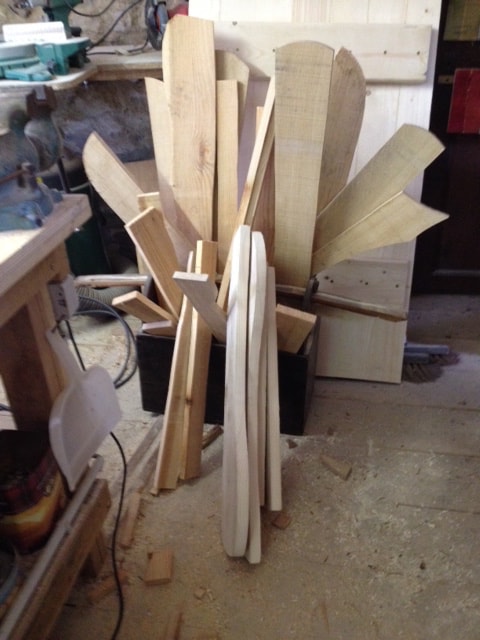
Adirondack chair in bits and pieces.

Adirondack untreated without back.

Adirondack chairs untreated.
The beauty of freshly sanded pine tree is undeniable. However, this type of wood has a tendency to go yellowish as time goes by.
I chose Miss Mustard Seed Grain Sack milk paint color because:
– working with a non-toxic milk paint only mixed with water is easy to apply and clean up afterwards.
– water based milk paint with color pigments tend to sink into the open pores of the wood but a lot of pigments remain on the top rough surface as well. Even though the wood had been sanded before painting, the water in the milk paint makes the fibers stand up again. To obtain a smooth surface you have to sand again. No problem, but be aware that you sand away some of the pigments. I offered the chair and the table two coats of paint and two sessions of sanding, (the last with 180 grade sand paper). The end result was very good and I could see the natural wood where I had sanded too much and the life of the annual growth pattern in the wood remained visible even after two layers of milk paint. This effect was desirable so I was happy.
City Beach Sale
Since the chairs were to be used partly exposed to sun and the occasional rain shower, I decided to saturate the milk painted wood, with 2 layers of linseed oil mixed with turpentine. I could have used MMSMP hemp oil, which does not need the turpentine to sink deep into the untreated wood, but I used what I was used to and had in stock.
Here you can see the Grain Sack Color before I started with the oil. The color impact is clearly to be seen between the small wooden dowels on the arm rest next to the back. I have read a good description of the color as a “neutral grayish taupe”. Miss Mustard Seed Internet pages referred to the color as a “chameleon color, meaning it looks different depending on what is around it. Sometimes it looks white, sometimes gray and sometimes more beige”, and this is true and evident looking at my photos.
The table before adding the oil.
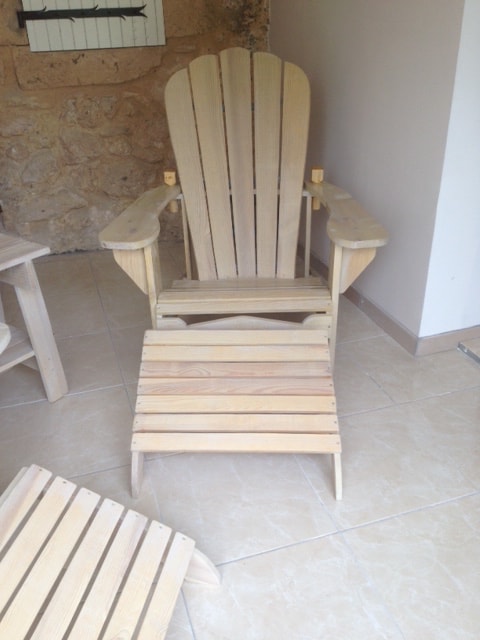
The last but not the least reason for choosing milk paint from Miss Mustard Seed is that the paint will never peal off [when used on raw wood].
The pigments are deeply inside the wood and linseed oil in contact with oxygen crystallises. The pores are sealed for humidity, whilst the humidity in the wood is allowed to evaporate thus drying without having to scrape off paint next year. The only treatment needed is one more work-over with oil next season and you are ready to enjoy yet again.
Let’s be honest though, two layers of oil need some time to dry before you should sit on it without risking stains on your clothes. I recommend three weeks of drying before use. But this is in our French climate. If you are in a hurry, you could apply a varnish without pigments, after the milk paint had dried completely, but then what about the humidity in the wood? I am a believer in using milk paint with oil. Take your time. Don’t be in a hurry. Easy come, easy go. Don’t worry. Be happy. Use Milk paint with some layers of oil.
The Milk Paint was supplied by Atelier NADAÏ in France who offered excellent support and service.
John also shared a picture of a rainbow bridge he built and painted using all the colours in the Miss Mustard Seed’s Milk Paint range! You can read more about the rainbow bridge project over at Atelier Nadai blog.
